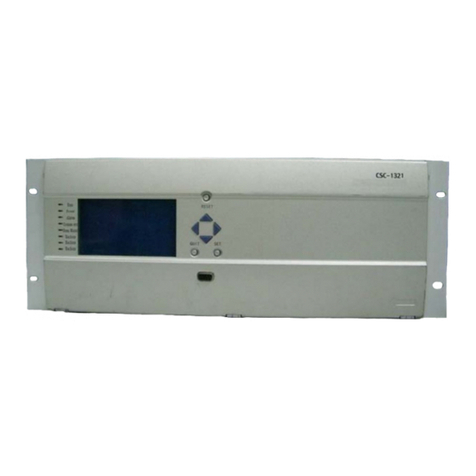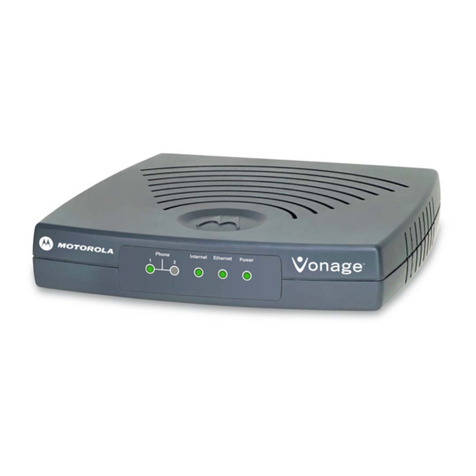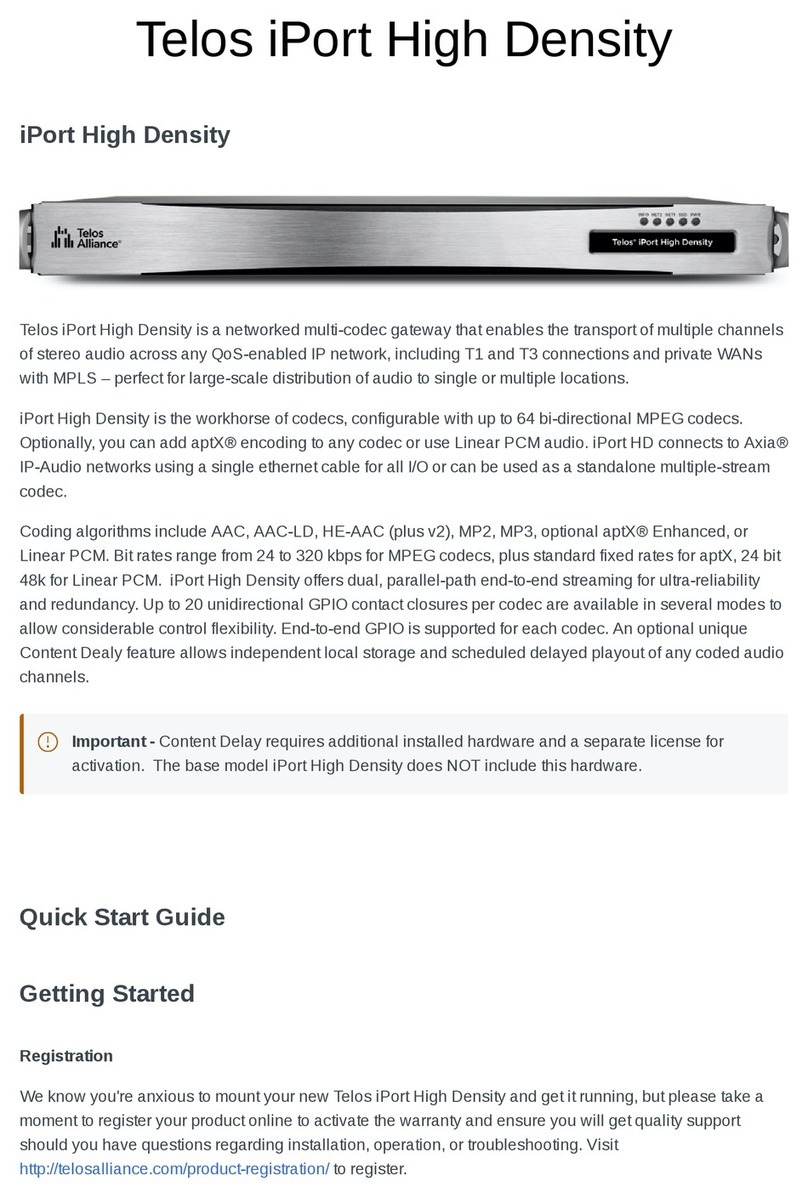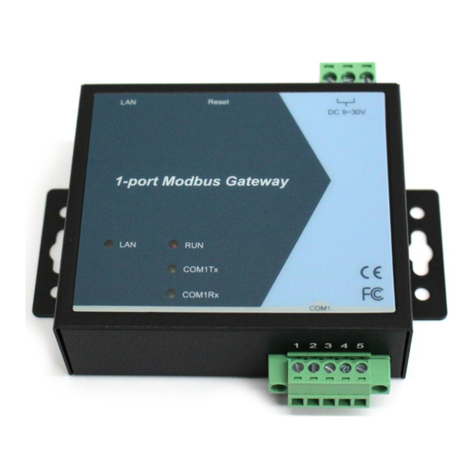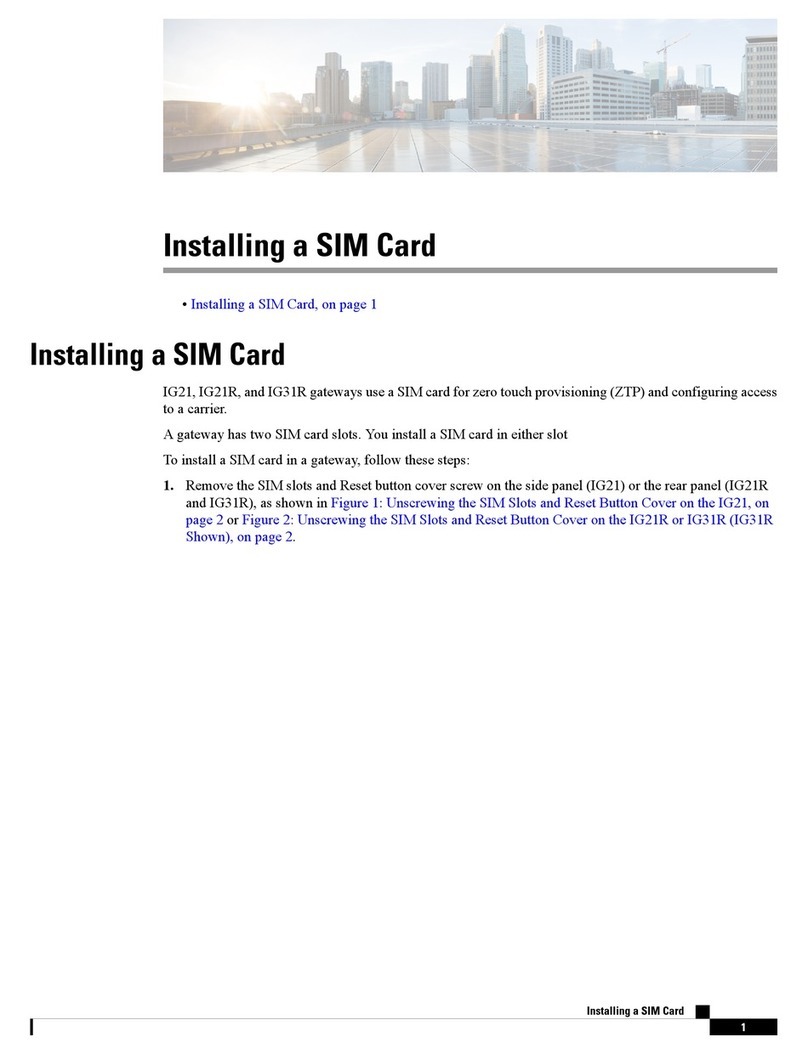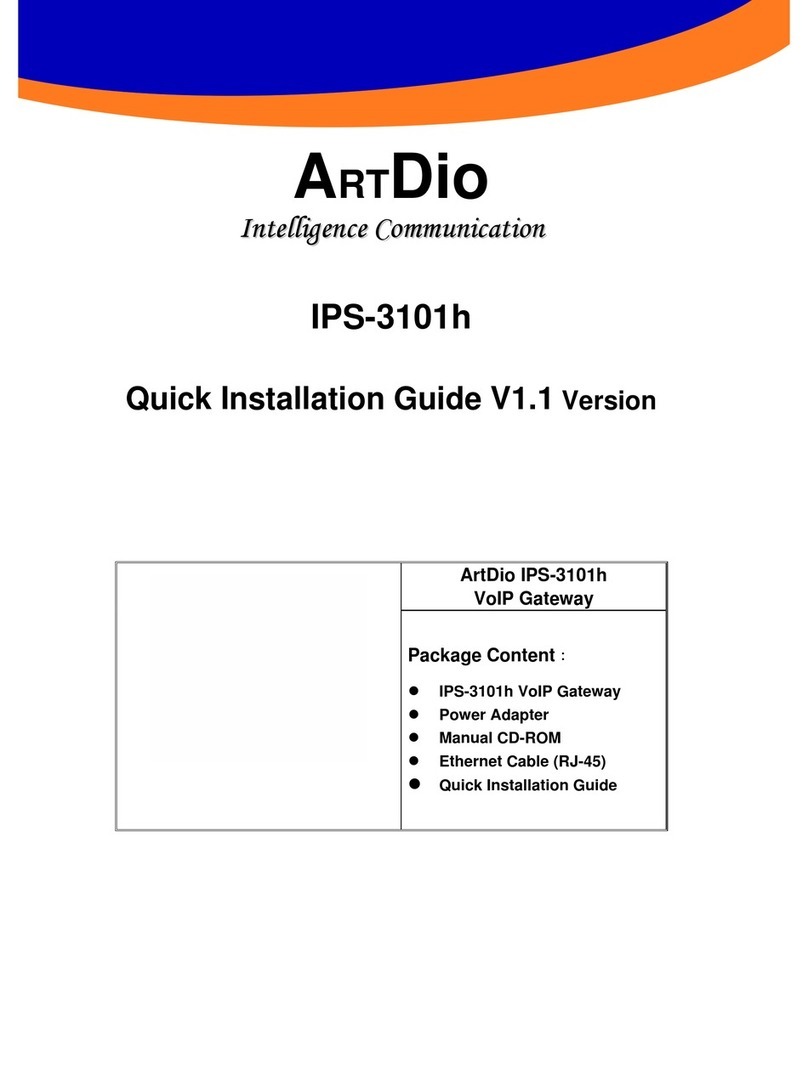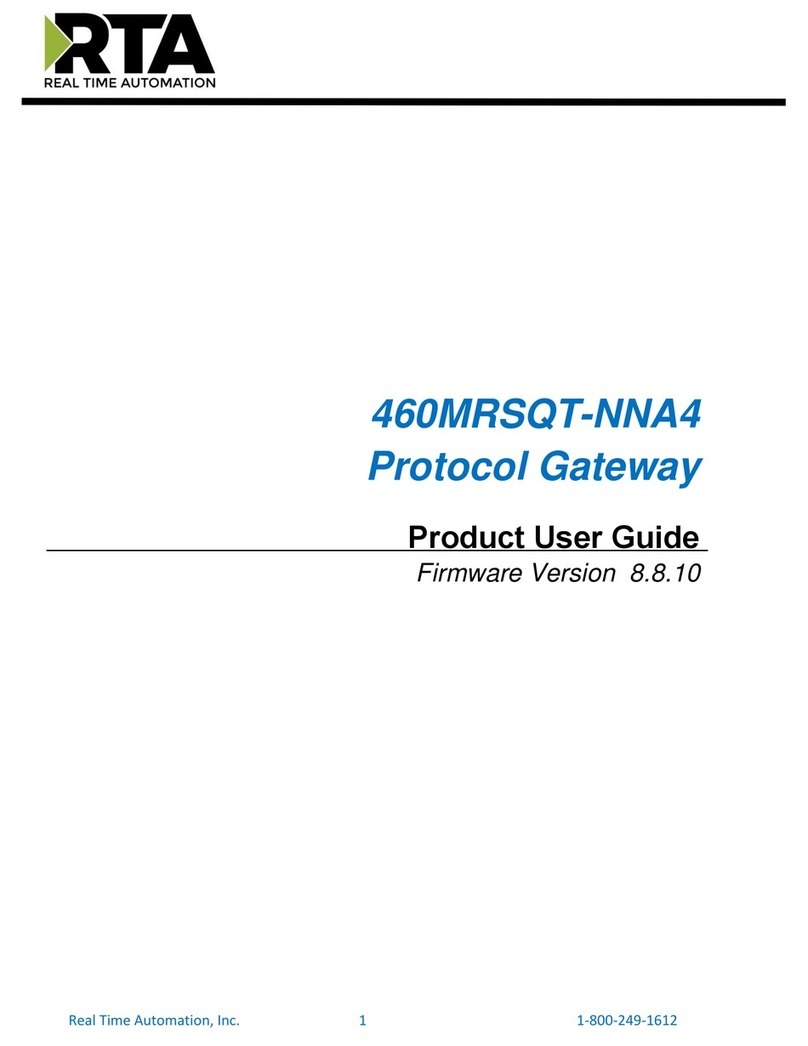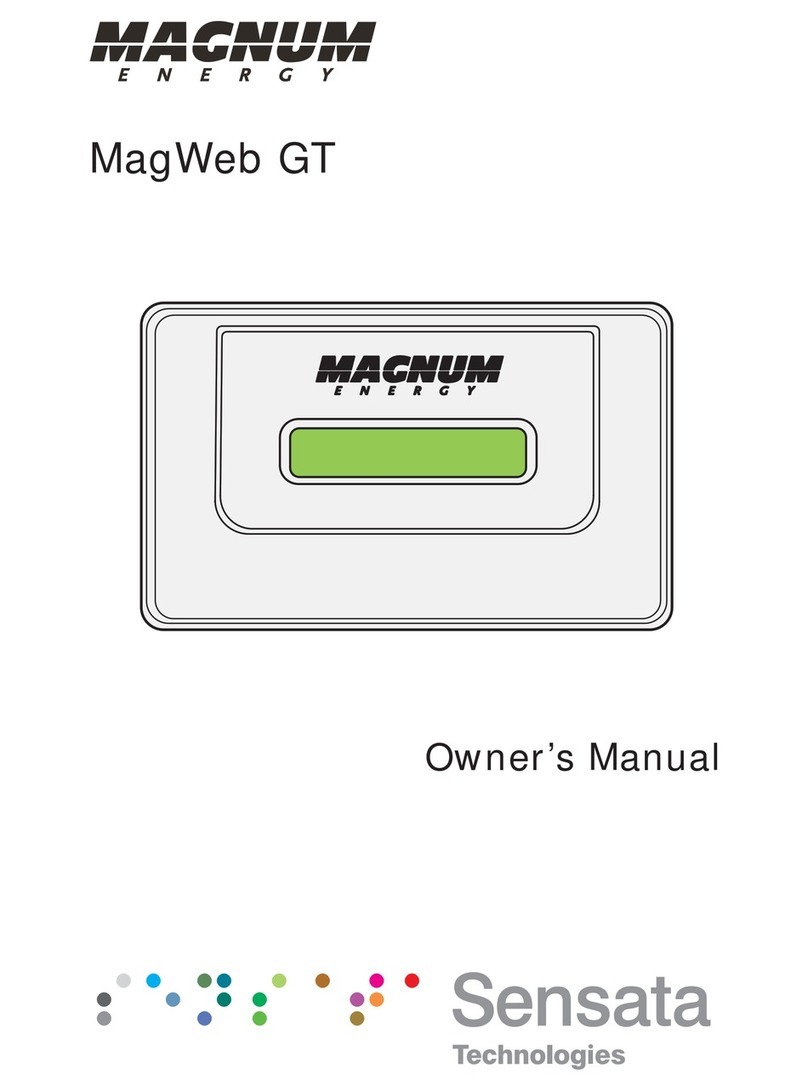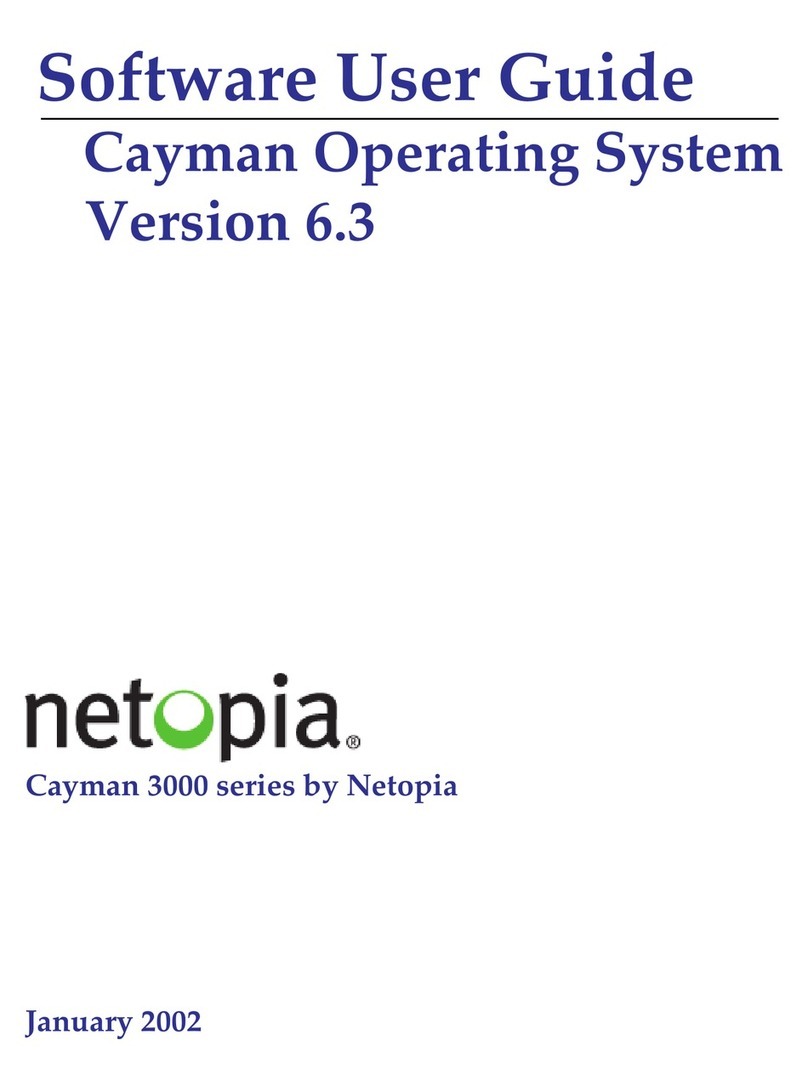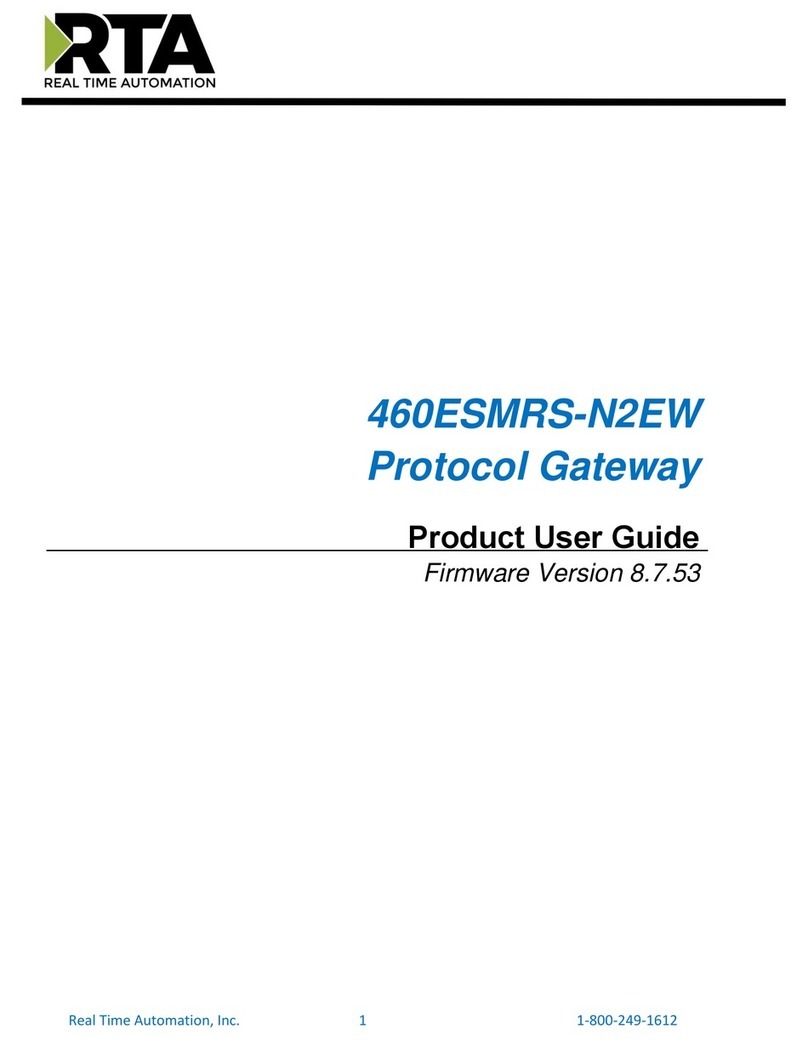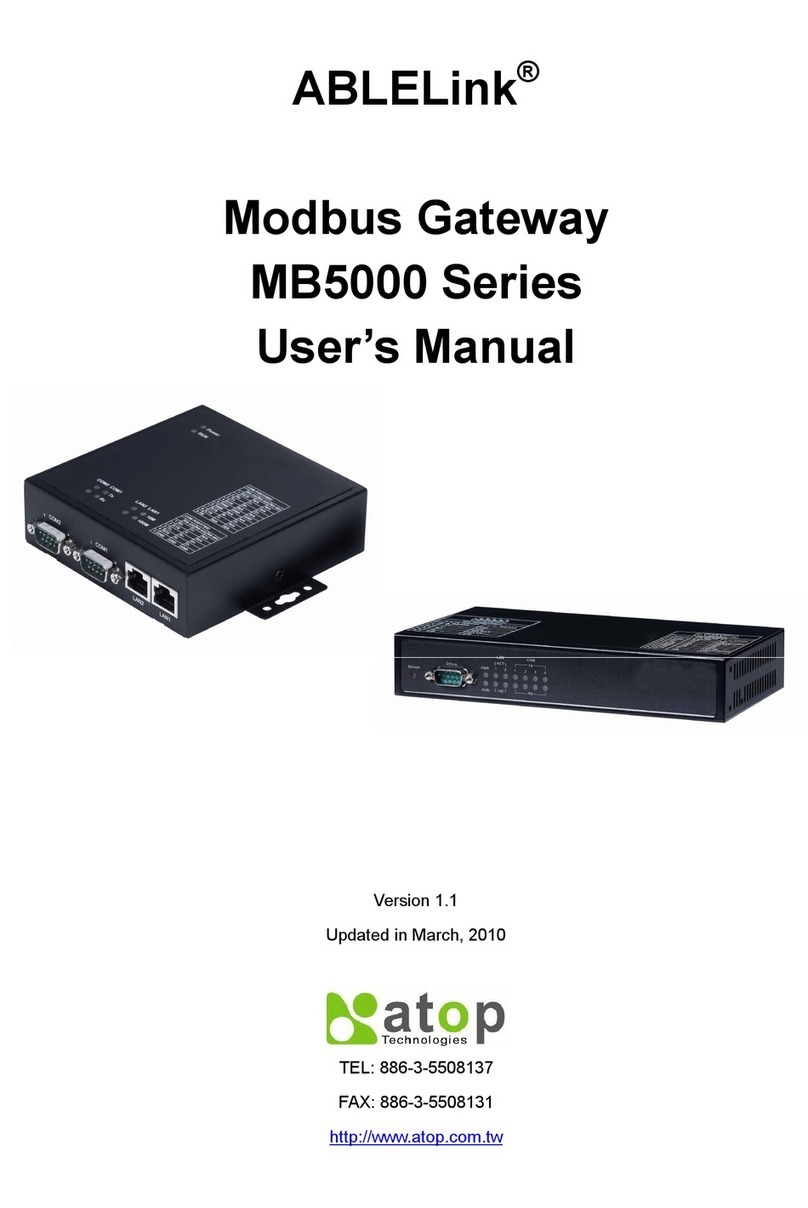SIFANG CSC-1326 User manual

CSC-1326*DWHZD\
0DQXDO

CSC-1326 *DWHZD\
0DQXDO
Compiled: Wu Fangying
Checked: Zhang Long
Standardized: Liang Luhui Inspected: Wang Liding
Version : V1. 0
Doc.Code: 0SF.452.038(E)
Issued Date: 2010-06-30
Copyright: Beijing Sifang Automation Co., Ltd
Note: The Company reserves the right of modifying the specifications. If there are
differences between products and the specifications, please contact us timely. And
we will provide you with relevant serves.
Technical support: Tel: 010-62986668 Fax: 010-62981900

Important Notes
Thank you for your using the products of Beijing Sifang Automation Co., Ltd.
For safe, correct and efficient using of the equipment, you must pay attention to the
following notes, please.
1) The specifications only apply to CSC-1326 power grid fault information system
embedded slave system.
2) Please read the specifications carefully, and adjust, test and operate the equipment
according to it. If there are documents attached to the equipment, please regard
the documents as standard.
3) In order to prevent the equipment being damage, putting in and pulling out the
module of equipments under power on, and touching chips and parts on the
printed circuit are strictly prohibited.
4) Please use eligible testing instrument and equipment to test and examine the
equipment.
5) If there is something wrong with the equipment or there is demand for repair,
please timely contact us with hot-line service.

CSC-1326 Gateway M anual
I
Content
1. GENERAL INFORMATION..................................................................................................- 1 -
1.1. APPLICABILITY...................................................................................................................- 1-
1.2. GENERAL CHARACTERISTICS .............................................................................................- 1-
2. TECHNICALCONDITIONS.................................................................................................- 2 -
2.1. ENVIRONMENT CONDITIONS ..............................................................................................- 2-
2.2. INSULATING PERFORMANCE ...............................................................................................- 2-
2.3. MECHANICAL PERFORMANCE ............................................................................................- 3-
2.4. EMC FEATURES .................................................................................................................- 3-
2.5. PROTECTION PERFORMANCE ..............................................................................................- 3-
2.6. THERMAL PERFORMANCE (OVERLOAD CAPABILITY).........................................................- 3-
2.7. POWER CONSUMPTION .......................................................................................................- 4-
2.8. CAPACITY OF DRIVE-OUT CONTACTS.................................................................................- 4-
2.9. MAIN FUNCTIONS...............................................................................................................- 4-
2.10. MAIN TECHNICAL SPECIFICATIONS ....................................................................................- 4-
3. OVERVIEW OF HARDWARE..............................................................................................- 4 -
3.1. EQUIPMENT STRUCTURE ....................................................................................................- 5-
3.2. OVERVIEW THE FUNCTIONAL MODULE OF THE EQUIPMENT ..............................................- 7-
3.3. MASTER MODULE ..............................................................................................................- 7-
3.4. ETHERNET MODULE ...........................................................................................................- 8-
3.5. COM MODULE...................................................................................................................- 9-
3.6. DI/DO MODULE.................................................................................................................- 9-

CSC-1326 Gateway Manual
II
3.7. TIME SYNCHRONIZATION MODULE ....................................................................................- 9-
3.8. SWITCH MODULE ...............................................................................................................- 9-
3.9. MAN-MACHINE INTERFACE (MMI) MODULE ...................................................................- 10 -
3.10. POWER MODULE ..............................................................................................................- 10 -
4. OVERVIEW OF SOFTWARE .............................................................................................- 10 -
4.1. SOFTWARE STRUCTURE....................................................................................................- 10 -
4.2. SOFTWARE FUNCTION ......................................................................................................- 11 -
5. TYPICALAPPLICABLE HARDWARE CONFIGURATIONS.......................................- 12 -
6. OPENING CHECK ...............................................................................................................- 13 -
7. INSTALLATION & TEST....................................................................................................- 13 -
7.1. INSTALLATION ..................................................................................................................- 13 -
7.2. CHECKING BEFORE POWER ON........................................................................................- 13 -
7.3. INSULATING RESISTANCE MEASUREMENT........................................................................- 13 -
7.4. CHECKING AFTER POWER ON..........................................................................................- 14 -
8. SPECIFICATIONS OF EQUIPMENT TERMINALS.......................................................- 14 -
8.1. MASTER MODULE ............................................................................................................- 14 -
8.2. ETHERNET MODULE .........................................................................................................- 14 -
8.3. COM MODULE.................................................................................................................- 15 -
8.4. DI/DO MODULE...............................................................................................................- 15 -
8.5. TIME SYNCHRONIZATION MODULE ..................................................................................- 16 -
8.6. SWITCH MODULE .............................................................................................................- 18 -
8.7. POWER MODULE ..............................................................................................................- 18 -

CSC-1326 Gateway Manual
III
9. HUMAN-MACHINE INTERFACE & ITS OPERATION ................................................- 18 -
9.1. THE FRONT LAYOUT OF EQUIPMENT ...............................................................................- 18 -
9.2. THE DISPLAY OF NORMAL RUNNING ...............................................................................- 19 -
9.3. MENU &OPERATION........................................................................................................- 20 -
10. OPERATION & MAINTENANCE......................................................................................- 34 -
10.1. CHECKING BEFORE RUNNING ..........................................................................................- 34 -
10.2. ATTENTIONS DURING RUNNING........................................................................................- 34 -
10.3. ORDINARY FAILURES &COUNTERMEASURES ..................................................................- 35 -
11. DELIVERY & STORAGE....................................................................................................- 35 -
12. ACCESSORIES PROVIDED WITH THE EQUIPMENT ................................................- 35 -
13. CONFIGURATION CODE...................................................................................................- 36 -
14. ORDERING NOTES:............................................................................................................- 39 -

CSC-1326 Gateway Manual
- 1 -
Chapter 1 Technical Specifications of the Equipment
1. General Information
1.1. Applicability
CSC-1326 *DWHZD\(hereinafter referred to as embedded slave system or system)is
a communication product based upon 32-bit micro processor chip with advanced
embedded operating system and flexible module design. The system is applicable to
1000kV and below electric power plant and substation. It is distributed, quasi real
time system, which can realize secondary equipments’ real time/non real time
operation, configuration and faultinformation collection, transferring and data
analysis functions in station. Forsubstation, system can access and manage intelligent
equipments, which are produced in different manufacturers and of different types
and with different communication protocols. In the meanwhile, it can collect data
from these equipments and process them respectively. Then, on this basis, a unified
data format is formed and these will be sent to the master system to make further data
analysis and processing through data network communication.
Each model of the CSC-1326 series equipments can be configured differently
depending on the requirement of application. Detailed configuring method refers to
section 3.2 Overview functional module of the equipment, and configuration coding
principle refers to the figures and tables in chapter 13. According to the number of
modules and the requirement of practical use, half length case (19/2 inches) and full
length case (19 inches) are optional, represented by “/1” and “/2” in model.
The detailed model, name and applicability included in CSC-1326 series
equipments refer to table 1.
Table 1 CSC-1326 series model, name and applicability
Model Structure Name Applicability
CSC-1326/1 Half length case
CSC-1326/2 Full length case
Embedded
slave
system
Access and manage intelligent equipments,
collect data of them, process these data and
send to the master system
1.2. General Characteristics
The characteristics of the equipment are as follows:
a) Module structure, rear modules, a single equipment supports twelve modules at
most, in other words, except the necessary master module and power module, ten
more modules can be configured. The width of every module is the same, actually
realizing flexible configuration. Every module can be installed in any slot (for

CSC-1326 Gateway Manual
- 2 -
convenient maintenance, master module and power module are required to be
installed in the most left slot and the most right slot respectively), with enough
support provided by the system;
b) The module communicates with each other through internal network, which is
mainly based upon 10M Ethernet, having CAN-bus for assistance. The two
communication methods are proved to be mature and stable after long term test in
many fields, ensuring the quickness and reliability of the internal communication.
c) The internal Ethernet is connected by switch, supporting cascade to other
equipments.
2. Technical Conditions
2.1. Environment Conditions
a) Environment temperature:
working temperature: -10℃~+55℃,Storage environment temperature: -25℃~
+70℃. At the maximum state, if no impulse input under the maximum value, there is
no irreversible change in the equipment. The equipment should work normally after
the temperature restore.
b) Relative humidity:
The highest average relative humidity is 90% in the most humid month, meanwhile,
the lowest average temperature of that month is 25℃and no condensed dewdrops.
c) Atmosphere pressure: 80~110Kpa (altitude is no more than 2km).
2.2. Insulating performance
a) Insulation resistance
Insulation resistances between electric and non-electric parts, between shells or
between independent circuits are measured with 500V Mega-ohmmeter. Under the
normal conditions, every loop’s insulation resistance should not be less than 100MΩ,
as defined in IEC60255-5:2000.
b) Medium strength
Under the normal test conditions, equipment may endure the 50Hz, 2KV voltage
level test for one minute without flashover and element being damaged, as defined in
GB/T14598.3-1993 (eqv IEC60255-5). All CPUs should be pulled out during the test.
c) Impulse voltage
Under the normal conditions, power input loop, AC current loop, AC voltage loop,
output contactor loop to ground and between AC loop and DC loop can bear 5KV,
1.2/50μs standard short-time lightening strike voltage test, as defined in

CSC-1326 Gateway Manual
- 3 -
GB/T14598.3-1993 (eqv IEC60255-5).
2.3. Mechanical Performance
a) Vibration
Grade I of vibration reaction test and vibration endurance test defined in
GB/T11287 (idt IEC60255-21-1) should be endured.
b) Impact
Grade I of impact reaction test and impact endurance test defined in GB/T14537
(idt IEC60255-21-2) should be endured.
2.4. EMC Features
a) Impulse interference
According to the GB/T14598.13 (eqv IEC60255-22-1) Rule, the equipment should
endure the grade III test, whose frequency is 100 kHz and 1 MHz, voltage is damping
oscillation wave which is 2500V for common-mode, 1000V for difference-mode.
b) Fast transient interference test
Grade IV of fast-transient interference test defined in GB/T 14598.10 (idt
IEC60255-22-4) should be endured.
c) Static discharge interference
Grade III of static discharge interference test defined in GB/T14598.14-1998 (idt
IEC60255-22-2) should be endured.
d) Radiant electromagnetic field interference
Grade III of radiant electromagnetic field interference test defined in
GB/T14598.9-1998 (idt IEC60255-22-3) should be endured.
2.5. Protection Performance
Protection Class of CSC-1326 is IP20, complying with GB 16836, security class I.
2.6. Thermal Performance (Overload Capability)
The thermal performance (overload capability) of the equipment accords with the
following specifications of DL/T 478-2001:
a) Alternating current circuit: consecutive operation under 2 times of rated current,

CSC-1326 Gateway Manual
- 4 -
10s allowed under 10 times of rated current, 1s allowed under 40 times of rated
current;
b) Alternating current voltage circuit: consecutive operation under 1.2 times of
rated voltage, 10s allowed under 1.4 times of rated voltage.
2.7. Power Consumption
The power consumption of the equipment accords with the following specifications
of DL/T 478-2001:
Direct current power circuit: in normal operation, CSC-1326/1 :<25W ;
CSC-1326/2:<50W.
2.8. Capacity of Drive-Out Contacts
The capacity of drive-out contact of DI/DO module: when the voltage is not higher
than 250V, current is not stronger than 0.5A, and time constant L/R is (5±0.75) ms, in
the direct current felt load circuit, the trigger point break capacity is 30W, and the
allowed long term current is not stronger than 3A.
2.9. Main Functions
The equipment has the following functions:
a) Use various income protocols to communicate with protection relays and fault
recorders;
b) Use various dispatching protocols to communicate with master system of
different levels;
c) Historical data and fault recording files storage;
d) Data process and analysis.
2.10.Main Technical Specifications
2.10.1. Rated input voltage
a) DC voltage: 220V、110V or 48V (according to ordering requirement);
b) AC voltage: 220V/50Hz or 220V/60Hz.
2.10.2. Response Time of Upload Data
a) Digital information response time: ≤1s;
b) Analog information response time: ≤3s;
3. Overview of Hardware

CSC-1326 Gateway Manual
3.1. Equipment Structure
The equipment uses IEC60297-3 standard aluminum alloy case whose height is 4U,
width is 19 inches (or 19/2 inches, according to configuration and ordering
requirement), and adopts integrated panel and lockable plugging functional module.
MMI module is installed in the front panel while the other modules are installed in the
rear part. The equipment adopts embedded horizontal installation, wiring from the
rear. The size of the openings refers to figure 1 to figure 6, in which the figures are in
mm.
Figure 1 Photo of the equipment
Figure 2 Front view of 19-inch equipment
Figure 3 Side view of the equipment
- 5 -

CSC-1326 Gateway Manual
Figure 4 Size of the openings of 19-inch case
Figure 5 Front view of 19/2-inch equipment
Figure 6 Size of the openings of 19/2-inch case
- 6 -

CSC-1326 Gateway Manual
- 7 -
3.2. Overview the Functional Module Of the Equipment
The equipment is designed under the concept of module. Different products in the
series are combined by the same functional module according to requirement,
realizing standardization of the functional module. Single equipment supports twelve
modules at most, consisting of master module, Ethernet module, COM module,
DI/DO module, time synchronization module, switch module, power module.
The rear view sketch of the equipment slots refers to figure 7, numbering 1 to 12
from left to right. Every module can be installed in any slot, but for convenient
maintenance, master module is required to be installed in slot 1, and power module
is required to be installed in slot 12. The hardware of master module, Ethernet module,
COM module, DI/DO module, time synchronization module is equipped with 8-bit
DIP switch. The lower four code of the module must be dialed to the slot number
minus 1 when using it. In normal status, the higher four code remains 0. For example,
if a module is installed in slot 6, the code should be dialed to 5, in other words,
00000101. Switch module has no DIP switch, thus there is no need to configure.
1 2 3 4 5 6 7 8 9 10 11 12
Master
module
Power
module
Figure 7 Layout of equipment module
The equipment supports cascade. The higher four codes of module in different
equipments mustn’t be the same in cascade. If there are three equipments to cascade,
the one with master module, also called master device, is considered as the first
equipment, in which the higher four code of the module with DIP switch is 0000. The
higher four codes of the modules of the second and third equipment (the two slave
devices) are 0001 and 0010 respectively. For example, if a module is installed in slot
4 of the second equipment, its code should be dialed to 00010011.
3.3. Master Module
The master module uses 32-bit embedded CPU chip, with strong communication
capability. The module uses a FLASH of 8M or 16M to save system parameter and
configuration, meeting requirement of system initialization when power on. The
master module is responsible for information storage in the system, so storage
medium of large capacity is necessary. There is CF card on the module, thus it is
possible to choose CF card of different capacities to be storage medium according to
requirement.
The two types of the master module refer to table 2.

CSC-1326 Gateway Manual
- 8 -
Table 2 Types of the master module
Module name Storage medium
MASTER MODULE-C CF card
MASTER MODULE-N CF chip on board
The following communication interfaces are on the MASTER MODULE-C
module:
Two 10M/100M self-adapted Ethernet interfaces (Ethernet-T in default, and
Ethernet-FX for option);
One CAN bus to communicate with MMI module.
The following communication interfaces are on the MASTER MODULE-N
module:
Four 10M/100M self-adapted RJ45 Ethernet interfaces;
One standard RS232 serial port;
One CAN bus to communicate with MMI module.
Of these two types, MASTER MODULE-N is recommended, for it has higher CPU
speed and memory configuration.
3.4. Ethernet Module
Ethernet module has the same hardware configuration with the master module. But
as expanded communication module, it has more types than the master module. Both
10M/100M Ethernet-T and Ethernet-FX are optional.
Table 3 Types of the Ethernet-T module
Module name Storage medium
ETHER-T MODULE-F flash
ETHER -T MODULE-D DOC electric disk
ETHER -T MODULE-C CF card
ETHER -T MODULE-G flash
ETHER -T MODULE-N CF chip on board
Of these types, ETHER -T MODULE-N is recommended, for it has higher CPU
speed and memory configuration.
Table 4 Types of the Ethernet-FX module
Module name Storage medium
ETHER -FX MODULE-F flash
ETHER -FX MODULE-D DOC electric disk
ETHER -FX MODULE-C CF card
ETHER -FX MODULE-G flash

CSC-1326 Gateway Manual
3.5. COM Module
The COM module uses 32-bit embedded CPU chip, with strong communication
capability.
The following communication interfaces are on the module:
Six standard RS232/RS485 serial ports: The two work modes of each serial port
share an interface, choosing through DIP switch. The position of the DIP switch in the
module refers to the figure below.
Serial port RS232/485 DIP switch
Figure 8 Position sketch of COM module RS232/RS485 work mode DIPswitch
The code is 6-bits, corresponding serial port 1 to 6 respectively. Switch to ON to
work in RS485 mode while in default it remains OFF, representing work in RS232
mode.
3.6. DI/DO Module
The DI of the DI/DO module is mainly used to transfer the hard node state without
microcomputer protection. The DO is mainly used to assist dual-system alternation
and sometimes use as special output signal.
The DI/DO module adopts 16-bit CPU specially designed for industrial use.
There are 10 DI and 2 DO on the module.
3.7. Time Synchronization Module
The time synchronization module adopts 16-bit CPU specially designed for
industrial use.
There are GPS serial time synchronization, serial + second pulse time
synchronization, IRIG-B pulse time synchronization, and IRIG-B voltage time
synchronization in the module, using jumper to choose.
3.8. Switch Module
- 9 -

CSC-1326 Gateway Manual
The switch module enables the cascade of two equipments. There are two
Ethernet-T terminals and two Ethernet-FX terminals on the module. With one switch
module, single equipment can connect to four other equipments at most.
3.9. Man-machine Interface (MMI) Module
The MMI module adopts 16-bit CPU specially designed for industrial use.
The MMI module has a 128×240 lattice (or 8 lines×15 columns) blue LCD screen.
It uses Sifang buttons, working in cooperation of three functional buttons and 5
indicators.
3.10.Power Module
There are three kinds of power module. One is 220VAC/DC, one is 110VDC, and
the other is 48VDC, all being provided with power loss signal and redundancy
function. The 110VDC type can meet the requirement of 125VDC.
4. Overview of Software
4.1. Software Structure
The software adopts layered module structure. The application layer and hardware
driver layer are separated, enabling the master module, Ethernet module and COM
module to use the same program. Configuring the hardware driver to different type
can support the use of the same application in different types of module.
The structure layer and the relations between modules refer to figure 9.
Real time database layer(transmits task and database)
Ethernet Serial CAN bus
Application layer(applies protocol task and assists task)
Figure 9 Entire structure of the program
The basic structure of the program is divided into three layers: real time database,
application layer and hardware driver layer. The real time database is the center of all
information, being responsible for information transmission and storage. The
- 10 -

CSC-1326 Gateway Manual
- 11 -
application layer is the information processing section, being responsible for
transferring up and down. The hardware driver layer directly faces to hardware, using
different driving tasks to realize receiving/sending data on different communication
channels. It enables the application layer to directly interact with information without
considering the actual type of communication medium.
The necessary function of the real time database layer is information transmission.
Because all applicable protocol tasks are independent of each other, they can’t
communicate with each other directly, and their communications totally depend on the
information transmission of real time database layer. The real time database layer of
master module and that of the other expanded communication module (Ethernet
module, COM module, etc.) are different. The real time database layer of expanded
module only needs to realize transmission function, while the real time database layer
of master module not only needs to finish transmission function, but also has to save
all the data of the equipment, including real time data, disturbance record and
protection events.
The most important part of the application layer is to apply protocol for information
conversion and transference. To cooperate with the protocol application, there are
some assistant tasks in application layer to realize information storage and
transmission in and between modules.
4.2. Software Function
The software adopts layered module structure, making a platform of strong
generality. It has the following functions:
◆ Support using many protocols to income information of IEDs
◆ Support using any protocol to Outgoing information of IEDs to master system
◆ Support serial port and Ethernet
◆ Special toolkit for configuration and debugging
◆ Communication state management
◆ Self-check and alarm
◆ Support configuration information auto calling from master system
◆ Management of setting values;
◆ Management of record files from relay or fault recorder;
◆ Support COMTRADE format record files
◆ Management of historic data
◆ Operation log
◆ Support storage device on Ethernet
The protocols supported by the software:
Protection income (as master protocol): CSC2000 protocol, DL/T 667-1999
(IEC60870-5-103) protocol (include ABB, SEIMENS, AREVA, NARI, SIFANG, etc),

CSC-1326 Gateway Manual
- 12 -
LFP protocol, IEC 61850 protocol, etc.
Disturbance recorder income (as master protocol): Shuanghe 2000B/C disturbance
recorder, Yinshan YS88A/89A/900A disturbance recorder, Zhongyuan ZH2/3/5
disturbance recorder, Shanda IV/V disturbance recorder, etc.
Communication with master system (as slave protocol): many types of extended
Ethernet protocols based on DL/T 667-1999 (IEC60870-5-103) protocol, etc.
5. Typical Applicable Hardware Configurations
As embedded slave system, CSC-1326 faces to many types of IEDs, and also needs
to transfer information to the master system. And sometimes there are two or more
different master systems. So one or more modules are used for income information,
and other one or more modules are used for transfer information to the master
system(s).
The minimum configuration of slave system application refers to figure 10.
1 2 3 4 5 6 7 8 9 10 11 12
Master
module
Ethernet
module
Power
module
Figure 10 Minimum configuration of slave system application (rear view)
This configuration is suitable for the condition that using Ethernet CSC2000
protocol to communicate with the protection (Ethernet module) of Sifang Co., Ltd, or
using protocol of Ethernet type to communicate with the protections of other
manufactures, and using protocol of Ethernet type to communicate with master
system(master module). Under such situation, the master module does not only work
as data processing unit, but also undertakes the task of communicating with outside.
Typical configuration of slave system application refers to figure 11.
1 2 3 4 5 6 7 8 9 10 11 12
Master
module
Ethernet
module
COM
module
Time
synchronization
module
Power
module
Figure 11 Typical configuration of slave system application (rear view)
This configuration is suitable for the condition that using Ethernet CSC2000
protocol to communicate with the protection (Ethernet module) of Sifang Co., Ltd,
and using protocol of serial type (COM module) and Ethernet type (Ethernet module)
to communicate with other protections, and at the same time in GPS or IRIG-B time
synchronization mode (Time synchronization module).
If actual application needs to communicate with more equipment of different
manufacturers, or needs to increase the number of master system, the modules have to
be added. The number of Ethernet module or COM module can be increased
according to the requirement. For convenient test, it is recommended to do not run
income protocol and outgoing protocol in the same module.

CSC-1326 Gateway Manual
- 13 -
Chapter 2 Installation & Operation
6. Opening Check
1 Open the package and see if the appearance of the equipment is perfect.
2 Check if the qualification certificate, documentation, accessories, spare parts
accord with your order, and if the model, name, amount are the same as described in
the packing list.
3 If there is something wrong, contact the manufacturer timely, please.
7. Installation & Test
7.1. Installation
1 The fixing equipment should be fixed firmly on the Bay cabinet. The connecting
screws should be tightened.
2 The equipment field and Bay cabinet field should be connected reliably to the
ground.
3 The equipment wiring should meet the requirement of the wiring figure.
7.2. Checking Before Power On
a) Pull out all modules, and see if the mechanic parts and electronic components
are loose, if there is mechanic damage, and if the wiring is firm;
b) See if the module is well connected and locked;
c) See if the man-machine interface (MMI) is well connected to the panel;
d) See if the DIP switch’s lower four codes of master module, Ethernet module,
COM module, I/O module, time synchronization module accord with the slots. If it is
cascaded, see if the higher four codes are not the same (detailed method refers to the
instruction in 3.2 overview functional module of the equipment).
7.3. Insulating Resistance Measurement
Insulation resistances between electric and non-electric parts, between shells or
between independent circuits are measured with 500V Megger. Under the normal
conditions, every loop’s insulation resistance should not be less than 100MΩ.
Group A: power circuit terminal 220V+ and 220V- (or 110V/48V+ and 110V/48V-)
of power terminal
Group B: DO and common terminal 13 to 16 of DI/DO module terminal, 4 lines in
total
Group C: DI terminal 1 to 10 of DI/DO module terminal, 10 lines in total
Grounding: grounding terminal (machine shell)

CSC-1326 Gateway Manual
- 14 -
Table 5 Measuring circuit of insulating resistance
No. Measuring circuit Terminal
1 Power circuit to ground Group A to ground
2 DO circuit to ground Group B to ground
3 DI circuit to ground Group C to ground
4 Power circuit to DO circuit Group A to group B
7.4. Checking After Power On
Check according to the following steps after power on:
a) LCD screen displays welcome screen, and then enters normal display, no
warning;
b) LED indicators are in normal status, and the event, alert and communication
interruption indicators do not shine;
c) Keyboard is in good condition, easy to operate;
d) The displayed configuration information is the same as the actual status;
e) The clock accord with the actual time, or else, it needs to be adjusted.
8. Specifications of Equipment Terminals
8.1. Master Module
8.1.1. MASTER MODULE-C
The top of the module is a serial port with DB9 terminal, and the bottom of it is
Ethernet port.
Ethernet port consists of two Ethernet-T RJ45 terminals. The upper one is Ethernet
1, and the lower is Ethernet 2.
8.1.2. MASTER MODULE-N
The top of the module is a serial port with DB9 terminal, and the bottom of it is
Ethernet port.
Ethernet port consists of four Ethernet-T RJ45 terminals. The upper one is Ethernet
1, and the others are Ethernet 2, 3 and 4.
8.2. Ethernet Module
8.2.1. ETHER-T MODULE-F and ETHER-T MODULE-D
The top of the module is serial terminal, and the bottom of it is Ethernet port.
The serial terminal is green 6-line phoenix terminal used for one serial port RS232
and RS485 mode. The modes have their own terminals, and there is no need to
configure. Terminal definition refers to below:
Table of contents
Other SIFANG Gateway manuals
Popular Gateway manuals by other brands
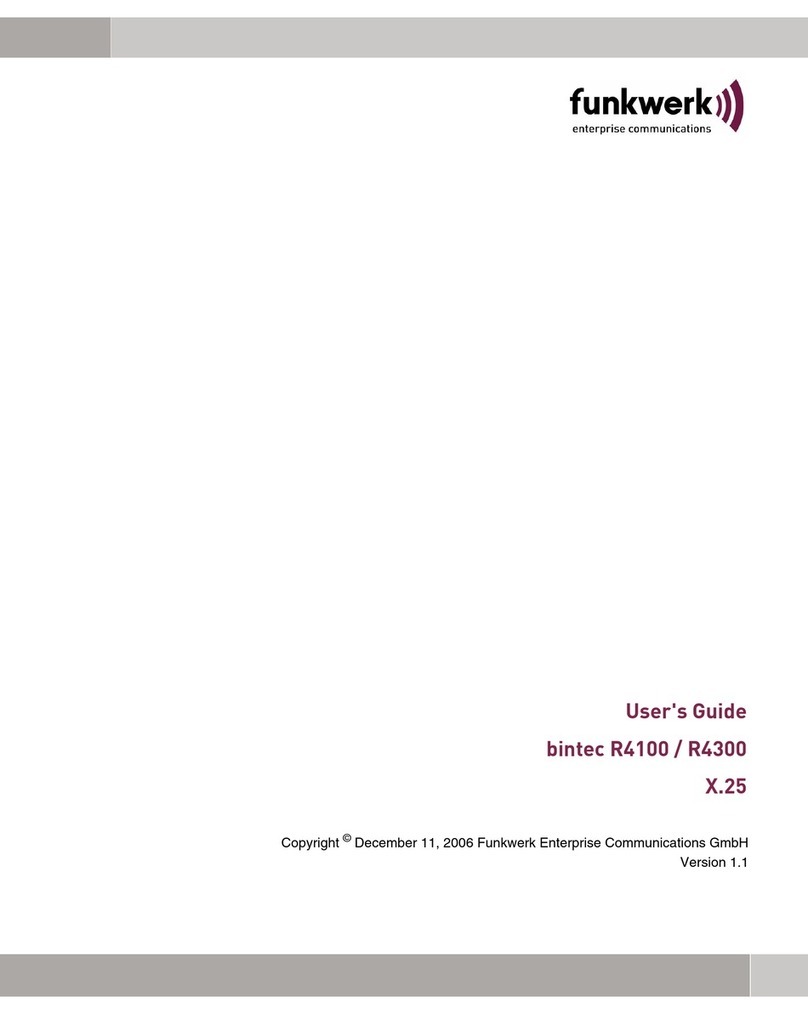
Funkwerk
Funkwerk bintec R4100 user guide
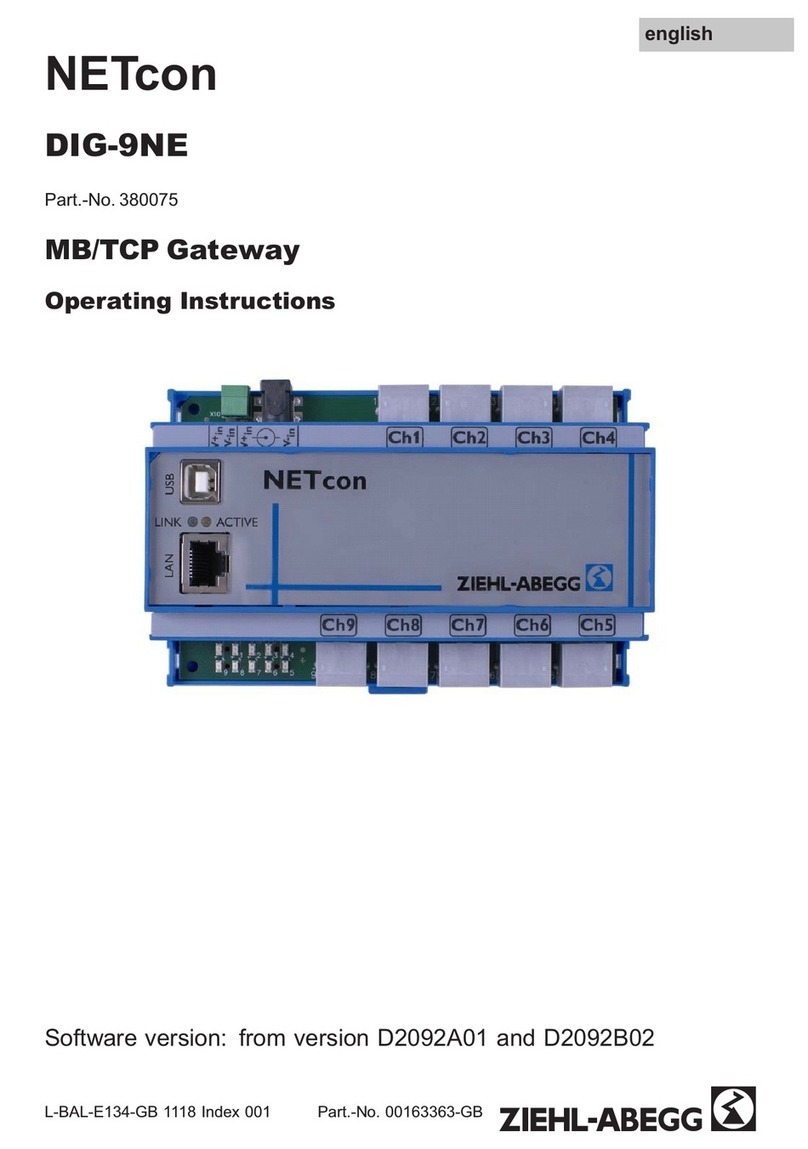
ZIEHL-ABEGG
ZIEHL-ABEGG NETcon DIG-9NE operating instructions
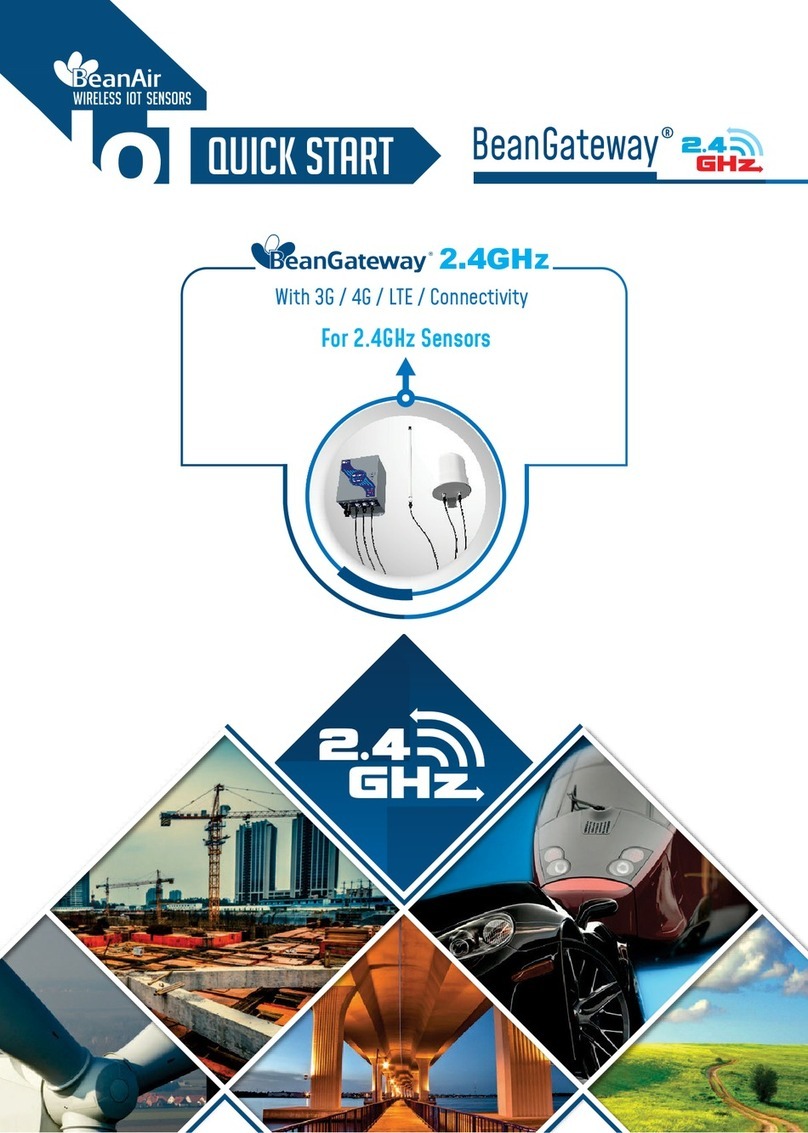
BEANAIR
BEANAIR BeanGateway quick start
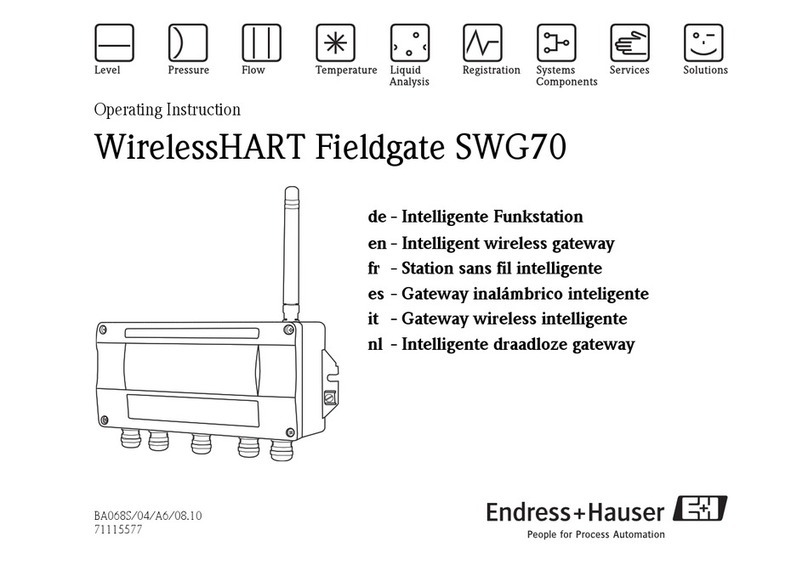
Endress+Hauser
Endress+Hauser WirelessHART Fieldgate SWG70 Operating instruction

B&B Electronics
B&B Electronics VFG9000-SERIAL quick start guide
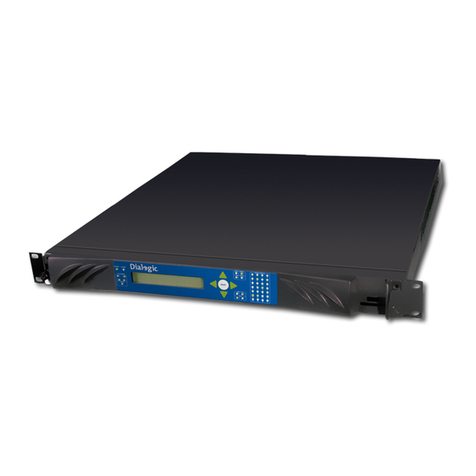
Dialogic
Dialogic IMG 1004 Installation and setup guide
